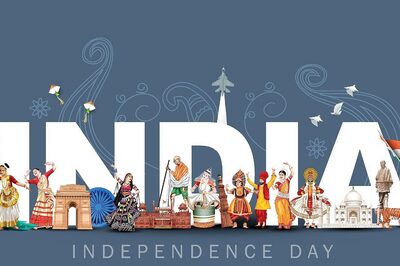
views
There is whole new financial sector- the carbon market- waiting to take India by storm. According to Karan Capoor, senior financial specialist, World Bank and the chief author of State of the Carbon Market 2006 report says “…carbon is now a financial commodity.
Carbon is now priced and business managers take the carbon price into consideration along with other factors in making business decisions…” And India corners almost 10 per cent share of this market. So there is little doubt emissions trading can be profitable.
According to a World Bank report, the global carbon market could be worth $25-30 billion in 2006, based on volumes in the first four months of the year, according to the World Bank. Some $7.5 billion worth of carbon contracts changed hands up to the end of April, compared with almost $11 billion in the whole of 2005, the Bank's sixth annual market survey found.
What are carbon credits: Carbon credits are a measure devised by the Kyoto Protocol to reduce world Greenhouse Gas emissions, and hence fight climate change. Both through the unofficial carbon market and by means of a provision of the Kyoto protocol called the "clean development mechanism," people, companies and states can claim to reduce their emissions by investing in carbon-friendly projects in poorer countries.
Among other schemes, you can earn carbon credits by paying people to plant trees. As the trees grow, they are supposed to absorb the carbon we release when we burn fossil fuels.
Since India’s CHG emission is below the level stipulated in Kyoto Protocol, it can sell carbon credits to developed nations. Japanese private companies continue to be major buyers of project-based carbon credits, taking a 46 per cent market share in 2005 compared with 36 per cent in 2004.
PAGE_BREAK
The Netherlands accounted for 10 per cent of the market in 2005, down from 19 per cent in 2004. China was by far the largest seller in the CDM market, with a 67 per cent market share in 2005, up from only 5 per cent in 2004.
India, which had a 43 per cent market share in 2004, represented only 3 per cent of sellers in 2005. Many Indian sellers had been holding back in expectations of rising prices, said Capoor in his report.
Which sectors can enter the CDM Bandwagon: Sectors such as cement, sugar, paper, iron and steel, power that includes biomass cogeneration, and hydro and wind energy projects, can enter the CDM bandwagon. Leading sugar companies such as Balrampur Chini Mills, Bajaj Hindustan, Dhampur Sugar, Mawana Sugar, Simbhaoli Sugar, Triveni Engineering, DSCL Sugar, among others have ventured into co-generation of power.
These companies would generate around 700 mw of clean energy and earn nearly $ 31.5 million.
How to benefit: With the clean development mechanism (CDM) in place, a host of Indian companies are eyeing additional earnings by adopting projects that reduce the emission of greenhouse gases. Very broadly, if you have a project that will not emit any greenhouse gas, you can qualify for carbon credits under the clean development mechanism (CDM) of the Kyoto Protocol.
CDM gives carbon credits or certified emission reduction (CER) units to clean energy projects in a developing country. These credits can be sold to companies in industrialised countries. The National CDM Authority is a single window clearance for such projects.
Where to sell: After the ministry gives clearance, CDM projects would have to be approved by and registered with the executive board of the United Nations Framework Convention on Climatic Change.
The trading takes place on two stock exchanges, the Chicago Climate Exchange and the European Climate Exchange. Carbon credits trading can also take place in the open market.
Competition: Both China and India were lagging behind Latin America but, India caught up very quickly. As of late-2005, India had emerged as the leading supplier of carbon credits in the world.
But according to a report, China now accounts for 43 per cent of total CERs registered at the UN, while India accounts for 12.11 per cent. However, India still leads the market in terms of number of projects at the same stage of development.



















Comments
0 comment